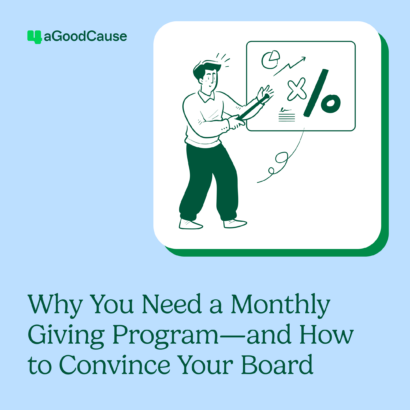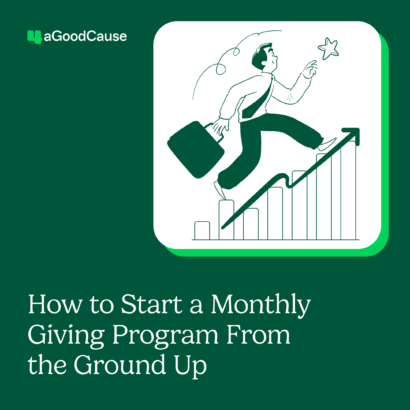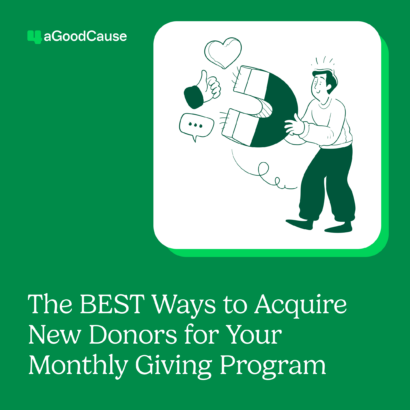Connecting with donors through email is a great, easy way to set the tone, earn trust and collect more donations year-round. It is a strategy that, if done right, can establish ongoing engagement and educate others about the great work you do. Today, we talk about the balance between fundraising emails and the other emails you should have on your radar for connecting with donors and prospective donors throughout the year.
Set the tone with welcome emails
Any time someone signs up for your email list, whether it be from a form on your website, by clicking an opt-in option after making a donation, or via your social media channels, they should receive a welcome message. Set your welcome email to deploy automatically after an action is taken. You can craft your welcome email messages based on audience type or how the person was added to your email list and program your CRM and third-party email software tool to work in conjunction, automating the entire process.
Enhance your welcome emails by configuring them as part of a series. For example:
Suzanne signs up for your email list via your sign-up form on your website. Once the system sees that she has entered her information, her first welcome email is generated. It provides information to let her know that she’ll be receiving a series of emails to help her get to know your organization and, in the meantime, invite her to connect with your cause on social media by offering all of the links to your online channels. This email also provides Suzanne with important contact information for key individuals within your organization—and invites her to reach out anytime if she needs something, has questions or to learn more about getting involved.
The next week, Suzanne receives another email as part of the welcome series. This time, it’s a short video from your executive director giving Suzanne a snapshot of your organization and the impact from supporters like her (volunteers, donors, brand ambassadors). The video ends with an invite for Suzanne to sign up for your organization’s next virtual event—and to tell her friends!
Week three’s email to Suzanne is the final email in the welcome series. In it, she hears about a wonderful story of impact and is shown the great work that you do. The email provides Suzanne with a link to a blog post that dives into more detail and showcases the need for supporters like her. It’s not a direct fundraising ask; it plants the seed.
8 email types for donor engagement
Once your subscribers have received the emails prepared in the welcome series, it’s typical to move them into the list of monthly e-newsletter recipients. This is a great start as a continued donor touchpoint, but most nonprofits send upwards of 50 email messages per subscriber a year (a little under half of those are fundraising-specific). So, other than a regular newsletter, what additional email types are we talking about?
1. Stories of impact
The best way to showcase the good work you do is through stories of individual people, places and things. Focus on one person or topic to build an emotional connection between your cause and your readers. Stories of impact emails may lead readers to a video or blog post to read/watch the story. Don’t leave it all in your email; give them the opportunity to continue the engagement online.
2. Event announcements
Nonprofits love a good event! Use regular email communications to list upcoming events and registration links as soon as you have that information available online. Send countdown emails (“only 3 days left!”) for registration, provide friends-and-family discount codes or special hashtags that readers can use to talk about your event online. Set a timeline for your event emails and increase the frequency of those emails the closer you get to your event dates.
3. Feedback requests
Throughout the year, ask your donors and others on our list for feedback. Include a link to a short, online survey that asks questions about why they give, what communication types they enjoy, which of your programs are of most interest to them, how they feel about your organization, if they’ve attended events in the past, etc. Use this information to update your communication and fundraising strategies going forward.
4. Relevant education
Send your audience pertinent information about who you are and what you do. Make it easy for them to talk about you; if they don’t know what you do, they’re less likely to give or volunteer or donate. Provide updates from the field, sneak peeks behind the scenes, visuals that showcase research, etc.
5. Advocacy updates
If you are making waves with lawmakers and legislators, showcase that work. Just as you do for your impact stories, talk about how the advocacy efforts your organization provides supports everyone in the community; give specific examples of the success your team, volunteers and staff have secured due to advocacy efforts.
6. Themed campaigns or giving day updates
Our Cause Awareness Days Planning Calendar offers a 12-month look at key dates where you can create specific giving campaigns or storytelling. Think about events such as #GivingTuesday—while you are always thinking through your annual fund campaign, there may be specific times during the year where you can focus on one day of giving, one cause or one campaign theme. Develop an email series to support specific campaigns in that nature.
7. General donation requests
Develop a comprehensive communication plan for ongoing donation requests to be sent throughout the year using a combination of email marketing, print/direct mail, your website donation pages and social media. Cross-promote messaging so that no matter where a prospect sees the message he/she knows where else she can go to get more information, invite others to get involved and, ultimately, make a donation.
8. Thank-you messages
Thank-you messages, much like your welcome email series, should be automated anytime a donation is made. Take those thank-you emails a step further by sending out messages at key points in the year to thank everyone on your list for their support. Thanksgiving or year-end thank you messages are great—use personalized messaging, videos or notes from those receiving your services for an added touch.
Additional tips for engagement
When crafting your donor email engagement strategy, think about your audiences, the tools you will use to automate the process and the content areas that will prompt the highest open rates and clicks. In particular, be mindful about:
- Enticing subject lines
- Personalized introductions
- Emotional storytelling
- A sense of urgency when appropriate
- Short, scannable content with links
- Visual elements to support your cause
- Specific (single) calls to action
For a full resource of ways to engage donors through email, view our “Email Marketing Tips and Tricks to Engage Donors” on-demand webinar.
Keep reading
Once a week or so we send an email with our latest article on online fundraising, nonprofit marketing and more. We never bug you; we just send you our latest piece of content. Subscribe now >



